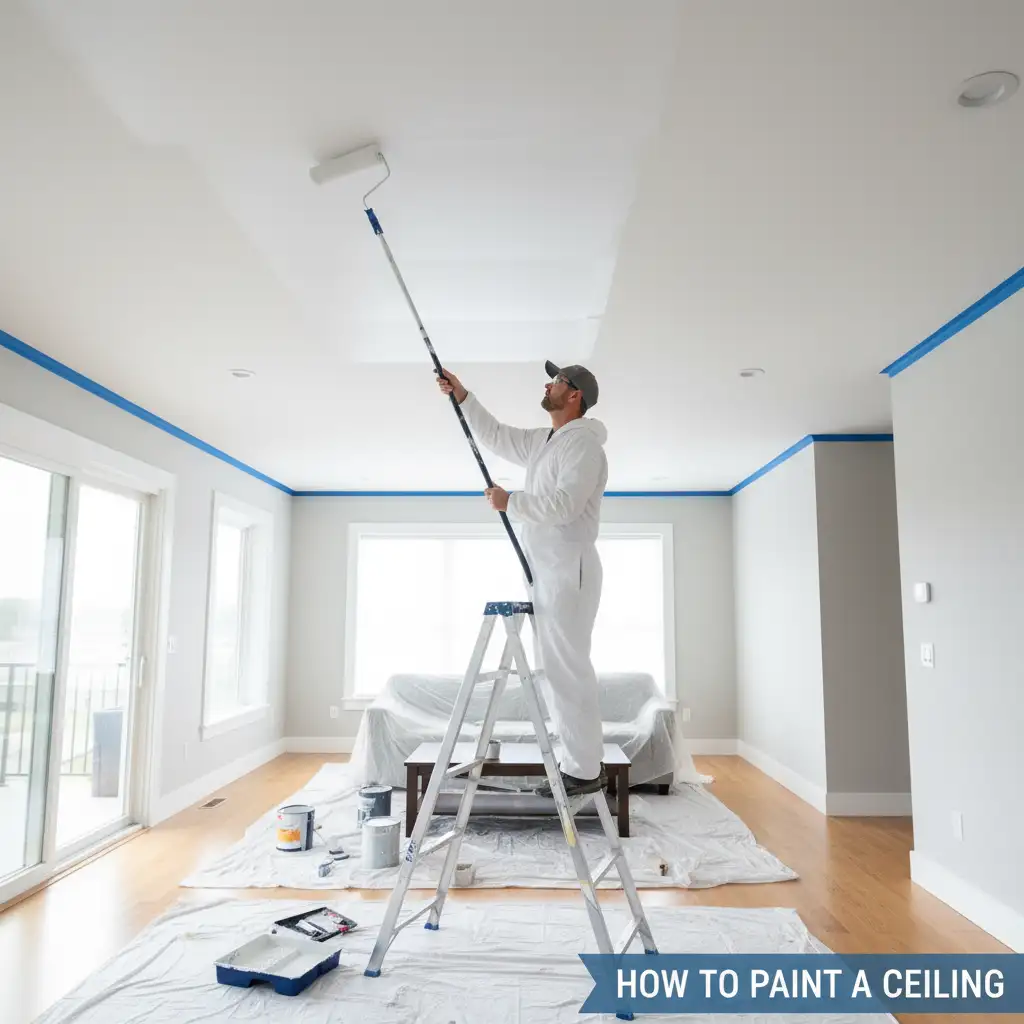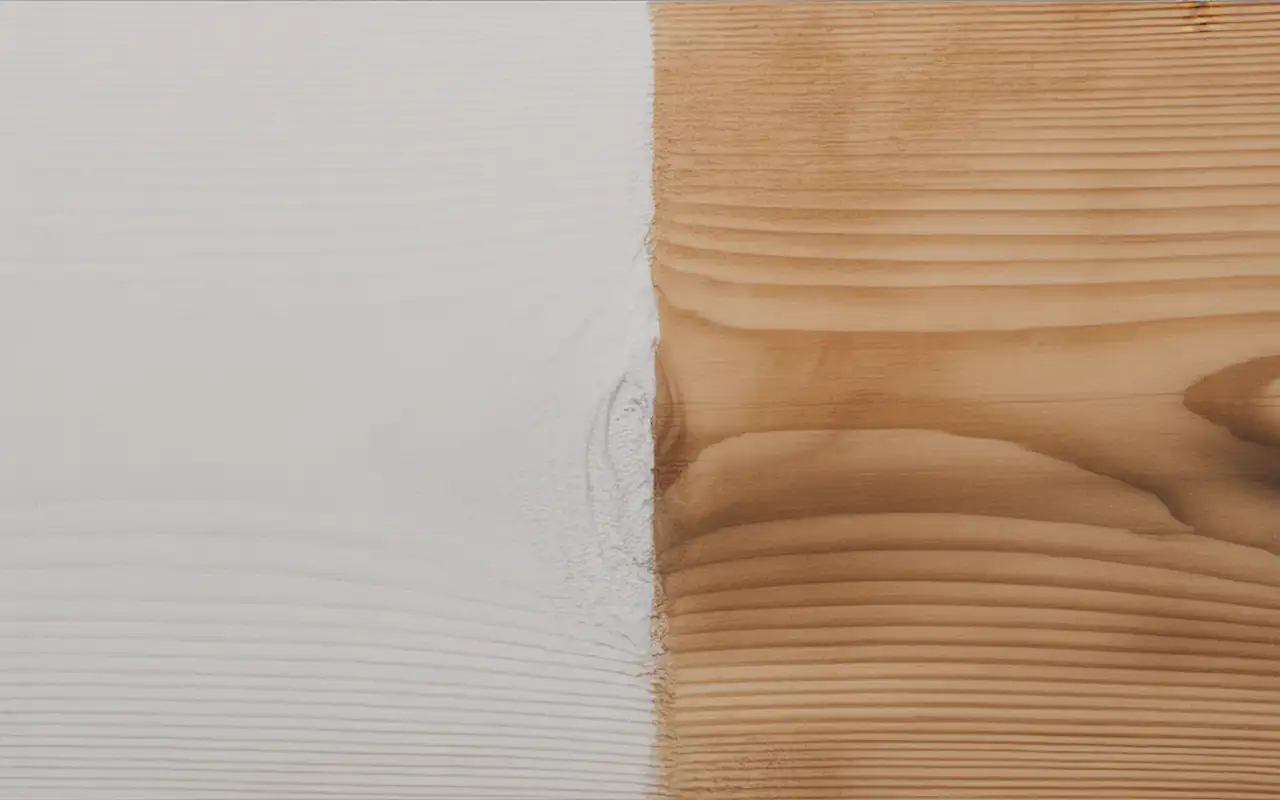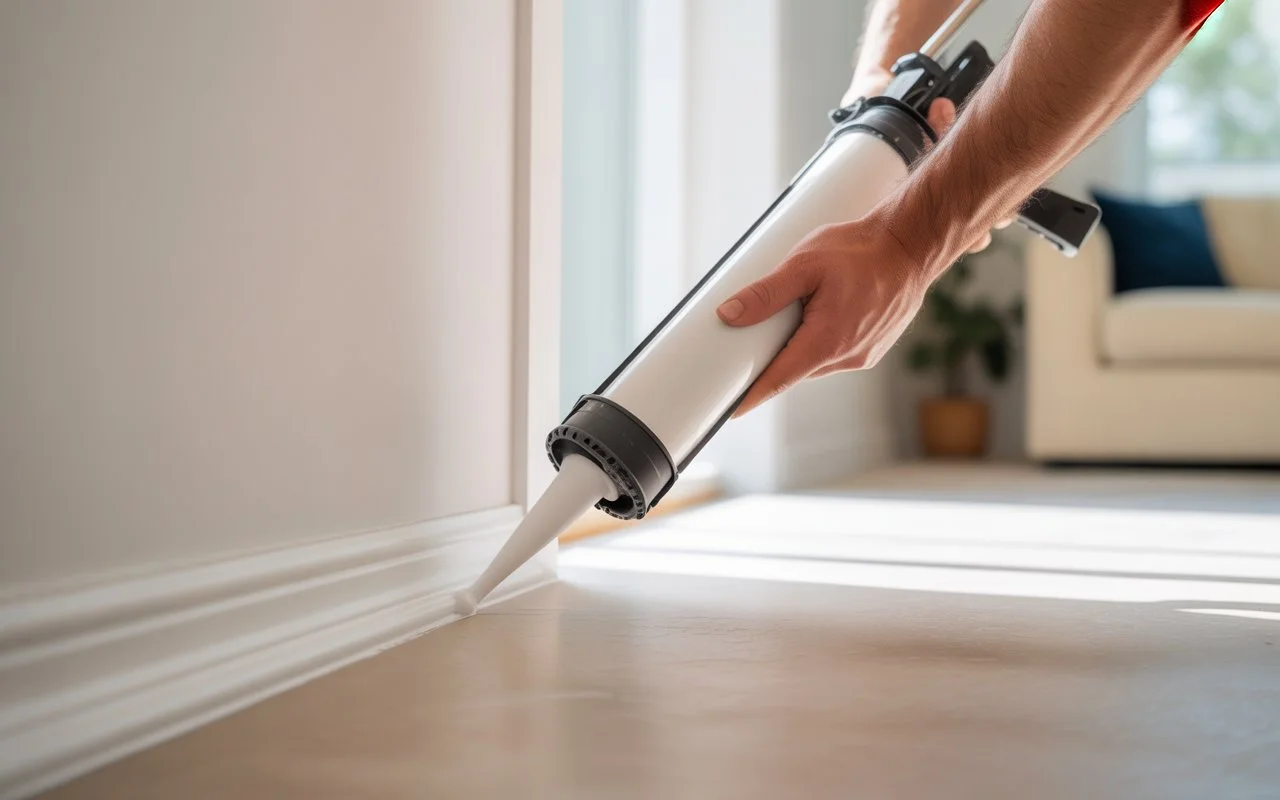How to Paint a Ceiling Like a Pro – Complete Guide
Home / Painting a ceiling might seem scary, but it’s easier than you think. Many homeowners avoid this project because they worry about drips, neck pain, and uneven coverage. The truth is, learning how to paint a ceiling properly can transform any room and brighten your entire space. With the right tools and techniques, painting ceilings becomes a manageable weekend project. This guide covers everything from choosing the best tools for painting a ceiling to applying the final coat like a pro. What You Will Need to Paint a Ceiling Before you start painting ceilings, gather these essential supplies: Paint and Primers: Flat ceiling paint (white or your chosen color) High-quality primer for stained or dark surfaces Behr ceiling paint offers excellent coverage and durability Brushes and Rollers: 9-inch paint roller frame Roller covers with 1/2-inch nap for smooth ceilings 3/4-inch nap rollers for textured ceiling paint applications 2-inch angled brush for cutting corners Extension pole (4-8 feet adjustable) Preparation Materials: 2-inch painter’s tape (avoid 1-inch tape) Plastic or canvas drop cloths Paint tray with disposable liners Ladder or step stool Sandpaper (120-grit for minor imperfections) Safety Equipment: Safety glasses or goggles Hat or head covering Non-slip shoes Dust mask for sanding Cleaning Supplies: Vacuum with brush attachment Microfiber cloths Mild detergent Spackling compound for crack repairs Prep the Ceiling and Room for Painting Proper preparation determines your project’s success. Start by removing all furniture from the room or moving it to the center. Cover remaining items with drop cloths. Clean your ceiling thoroughly using a vacuum with a soft brush attachment. Pay special attention to corners where dust collects. For textured ceiling paint preparation, use gentle strokes to avoid damaging the texture. Check for cracks, holes, or water stains. Fill small cracks with spackling compounds and let dry completely. Sand any rough spots with 120-grit sandpaper. Water stains need primer before painting to prevent bleed-through. Turn off electricity to ceiling fixtures at the breaker box. Remove light fixtures and ceiling fans if possible. If removal isn’t practical, tape around them carefully with painter’s tape. Put Down Drop Cloths Quality drop cloths protect your floors and furniture from paint splatters. Canvas drop cloths work better than plastic because they absorb paint instead of spreading it around. Lay drop cloths with at least 12-inch overlaps. Tape them to baseboards so they stay in place while you work. Don’t skip this step – ceiling painting creates more drips than wall painting. For rooms with hardwood or tile floors, use canvas drop cloths. Plastic works fine over carpet but can be slippery. Consider using both: plastic under canvas for extra protection. Tape the Tops of the Walls Use 2-inch painter’s tape along the wall where it meets the ceiling. This width gives you enough protection when using a paint roller on ceiling surfaces. One-inch tape leaves walls vulnerable to roller marks. Press tape edges firmly to prevent paint seepage. Remove any air bubbles by running your finger along the edge. Quality tape costs more but saves time on touch-ups later. If you’re painting the entire room, paint the ceiling first or walls first? Always start with the ceiling. This prevents wall paint from getting on your fresh ceiling work. Prime the Ceiling and Cut the Corners Priming ensures even paint coverage and better adhesion. Use latex primer for most ceilings. Choose oil-based primer for water stains or smoke damage. Shellac-based primers work best for severe stains. Apply primer with the same technique you’ll use for paint. Start by cutting in corners and edges with your angled brush. Paint a 2-inch strip around the entire perimeter. Load your brush with primer but don’t overdo it. Too much primer creates drips. Work in sections and maintain a wet edge to avoid lap marks. For textured ceilings, use a brush with firm bristles that can work into the texture. Take your time with corners – these areas show imperfections most clearly. Paint in Sections With a Roller Now comes the main event: using a paint roller on ceiling surfaces. The easiest way to paint a ceiling is working in 4-foot by 4-foot sections. This keeps your edges wet and prevents lap marks. Start in a corner and work away from the main light source. Roll in a “W” pattern first, then fill in with parallel strokes. This technique distributes paint evenly and reduces roller marks. Keep consistent pressure on the roller. Too much pressure creates streaks. Too little leaves thin coverage. Roll slowly to minimize spattering. Here are key ceiling painting tips for roller technique: Don’t roll directly overhead – work at an angle Overlap each section by 6 inches while the edge is still wet Reload your roller frequently for consistent coverage Vary your final stroke direction slightly to hide seams Use your extension pole for most of the work. This saves your neck and gives you better control than stretching from a ladder. Adjust the pole length as needed for comfort and reach. Add a Second Coat as Needed and Clean Up Most ceilings need two coats for complete coverage. Check your work once the first coat dries completely. Look for thin spots, streaks, or areas where the old color shows through. Apply the second coat using the same technique. Work quickly and maintain wet edges. The second coat usually goes on easier and covers more smoothly than the first. While the final coat dries, clean your tools. Wash rollers and brushes in warm soapy water immediately. Clean paint trays and store unused paint properly. Remove painter’s tape while the paint is slightly damp but not wet. Pull tape at a 45-degree angle for clean lines. Touch up any areas where tape pulled away paint. Reinstall light fixtures once paint is completely dry. Turn power back on at the breaker box and test all fixtures before finishing up. Tips for Painting a Ceiling These professional tips on painting a ceiling will help you achieve better results: Color and Paint Selection: White ceiling paint









![How Long Does It Take an Oil Painting to Dry? [2025 Guide]](https://sdcustompainting.com/wp-content/uploads/2025/08/how-long-does-it-take-an-oil-painting-to-dry-scaled.webp)
